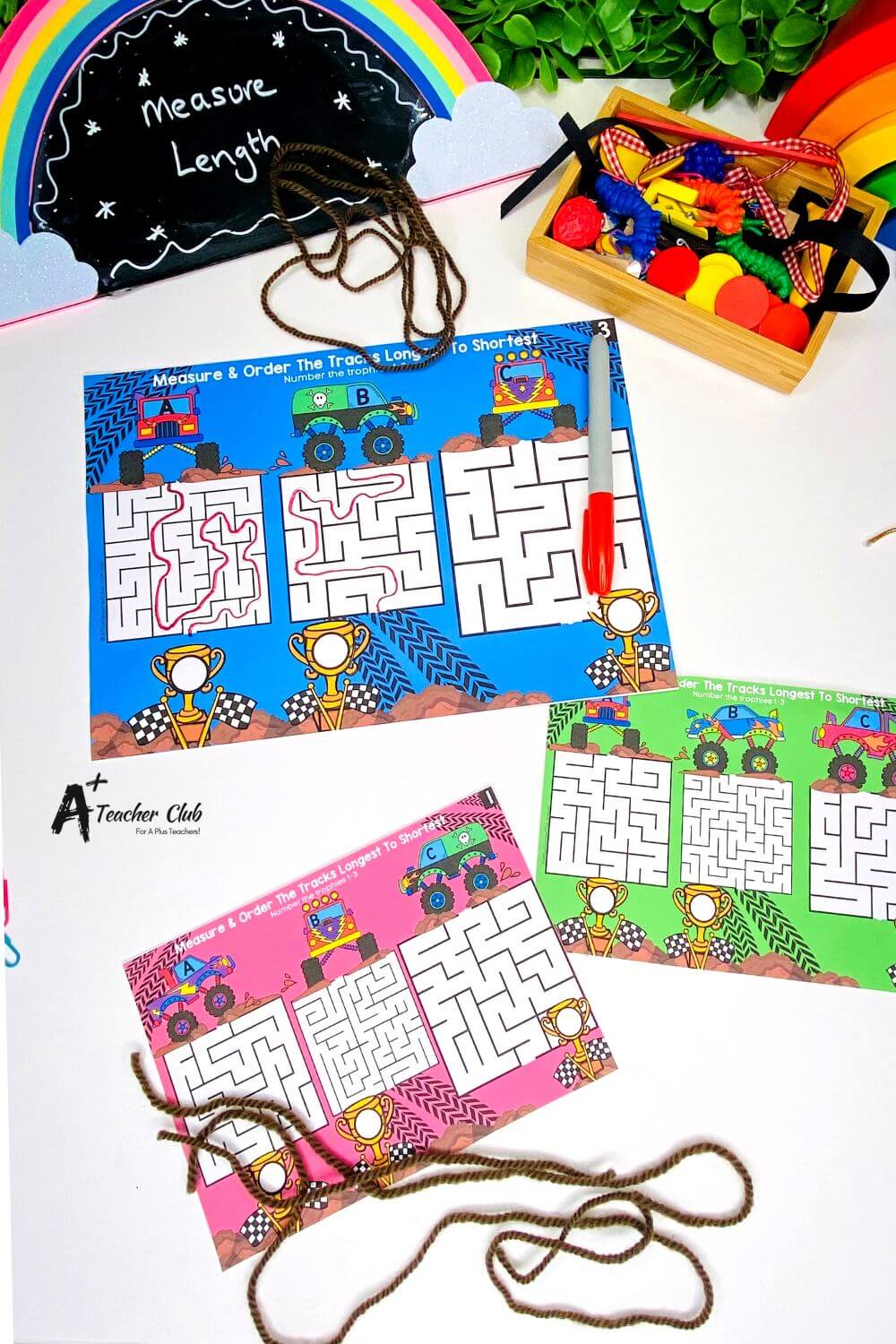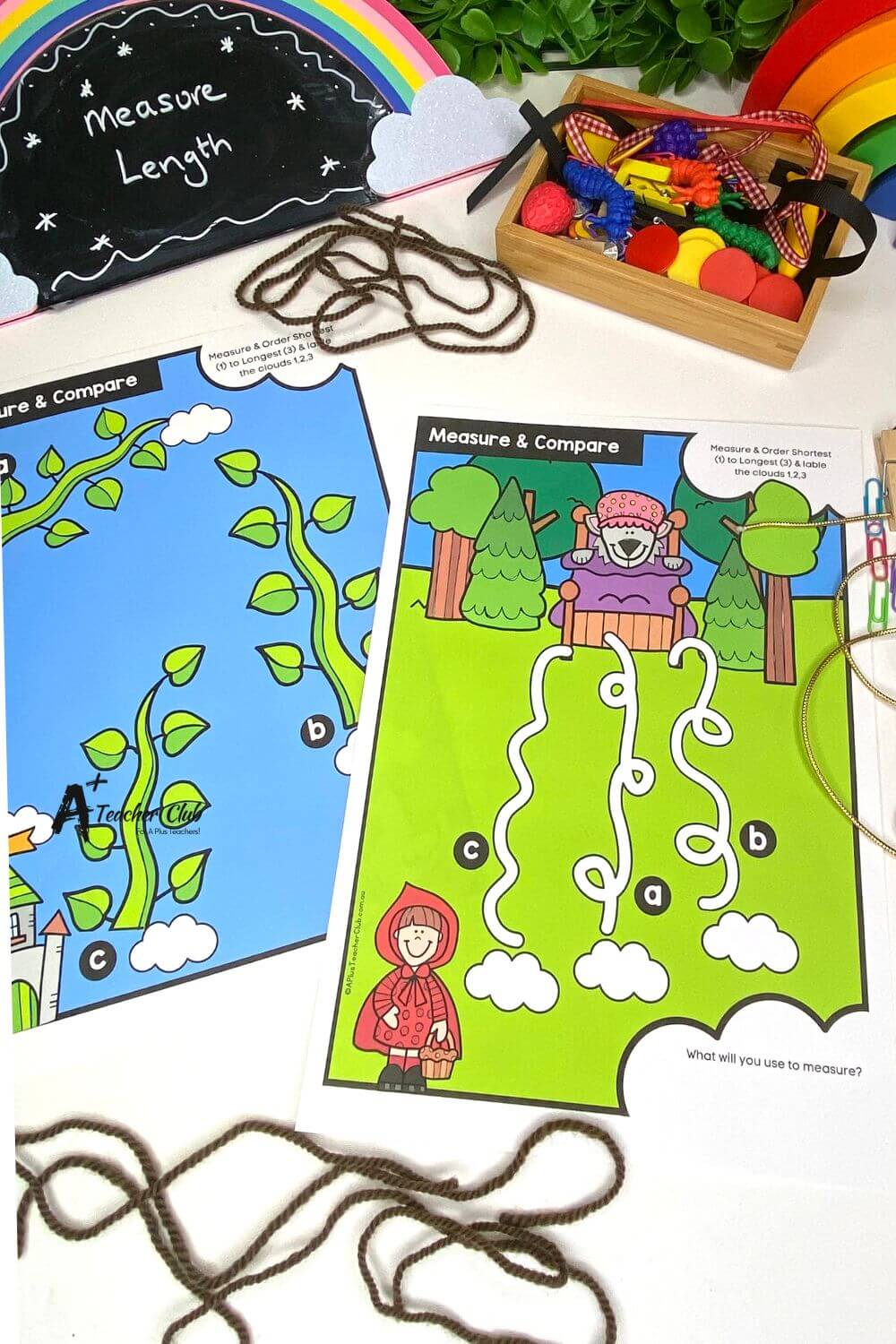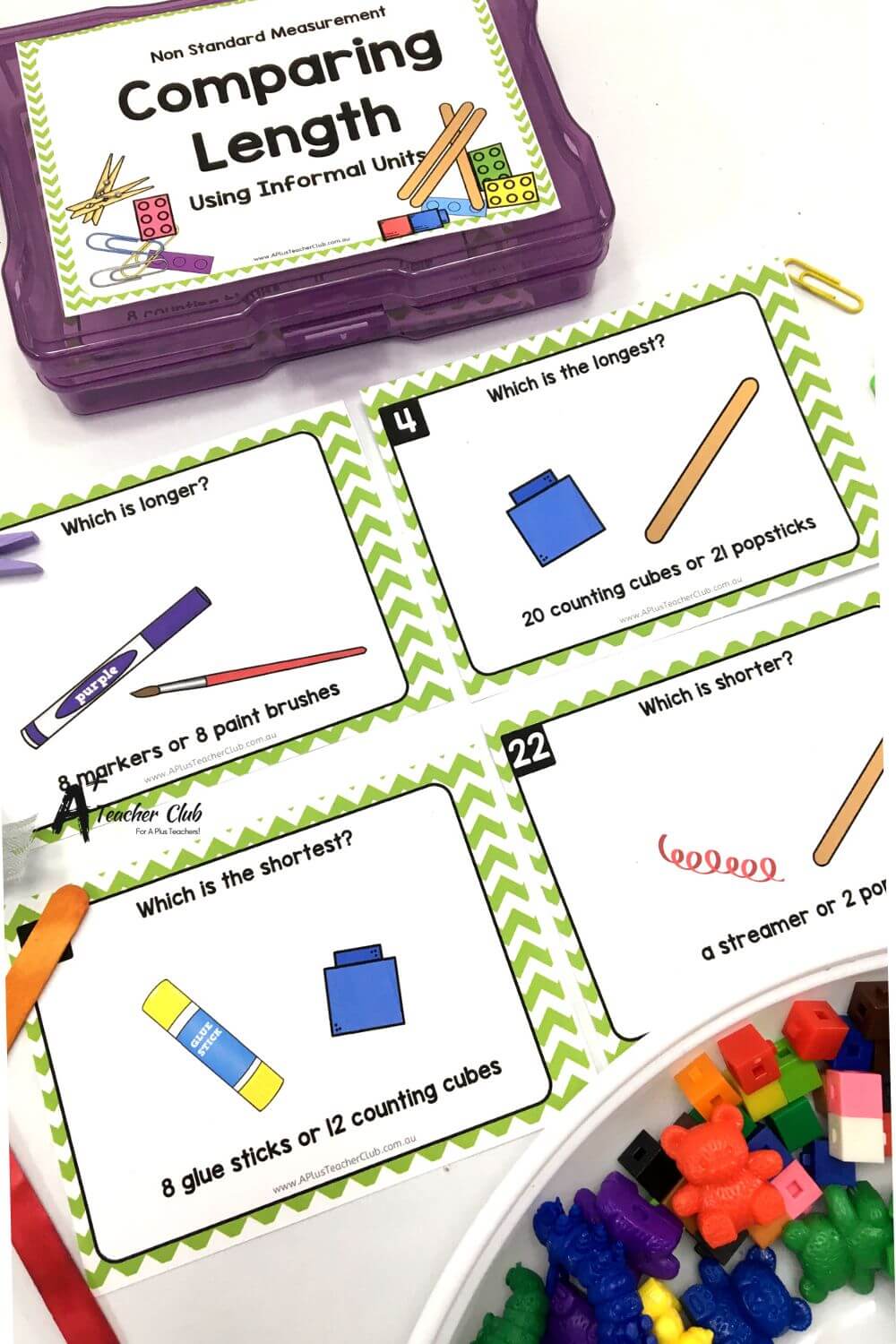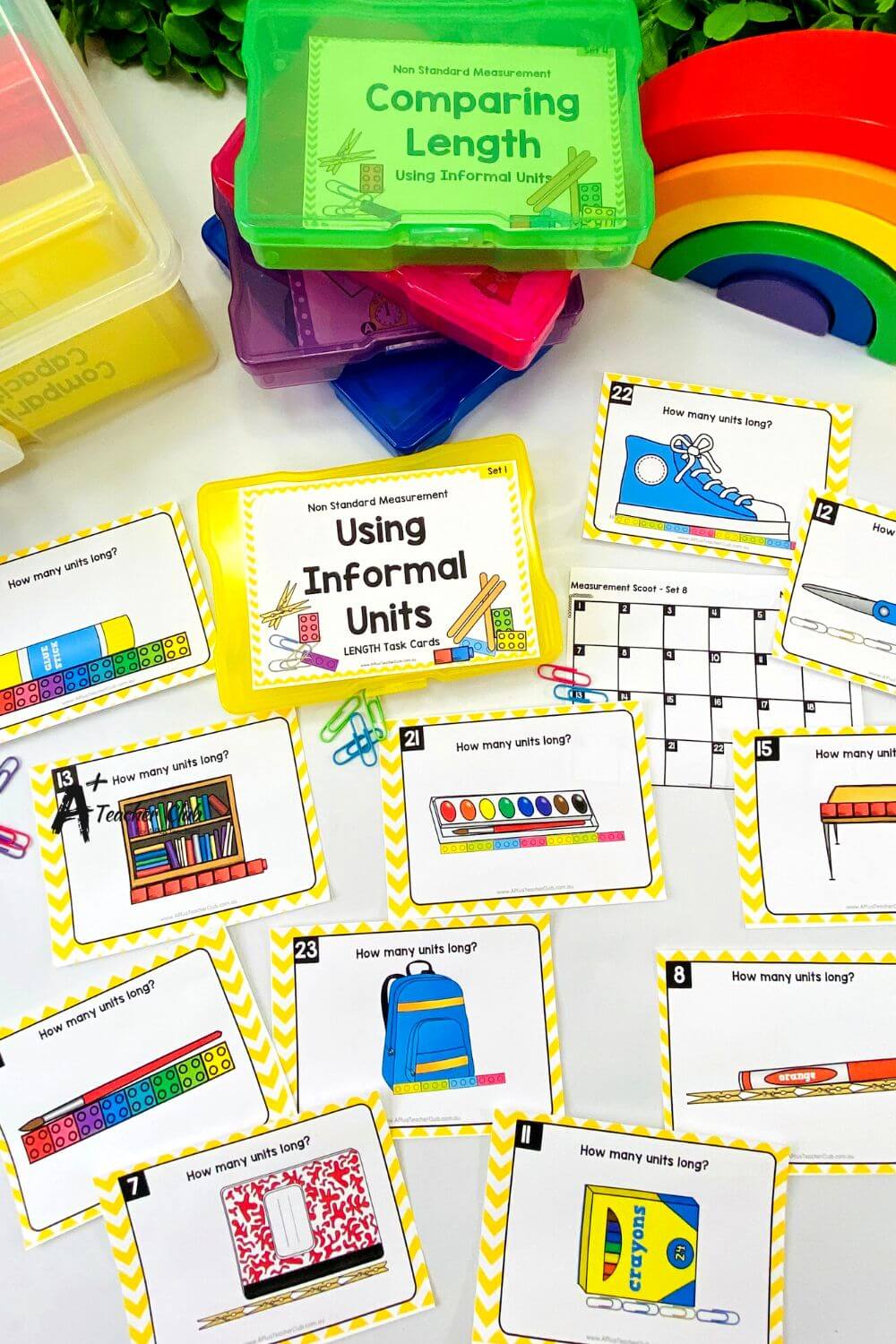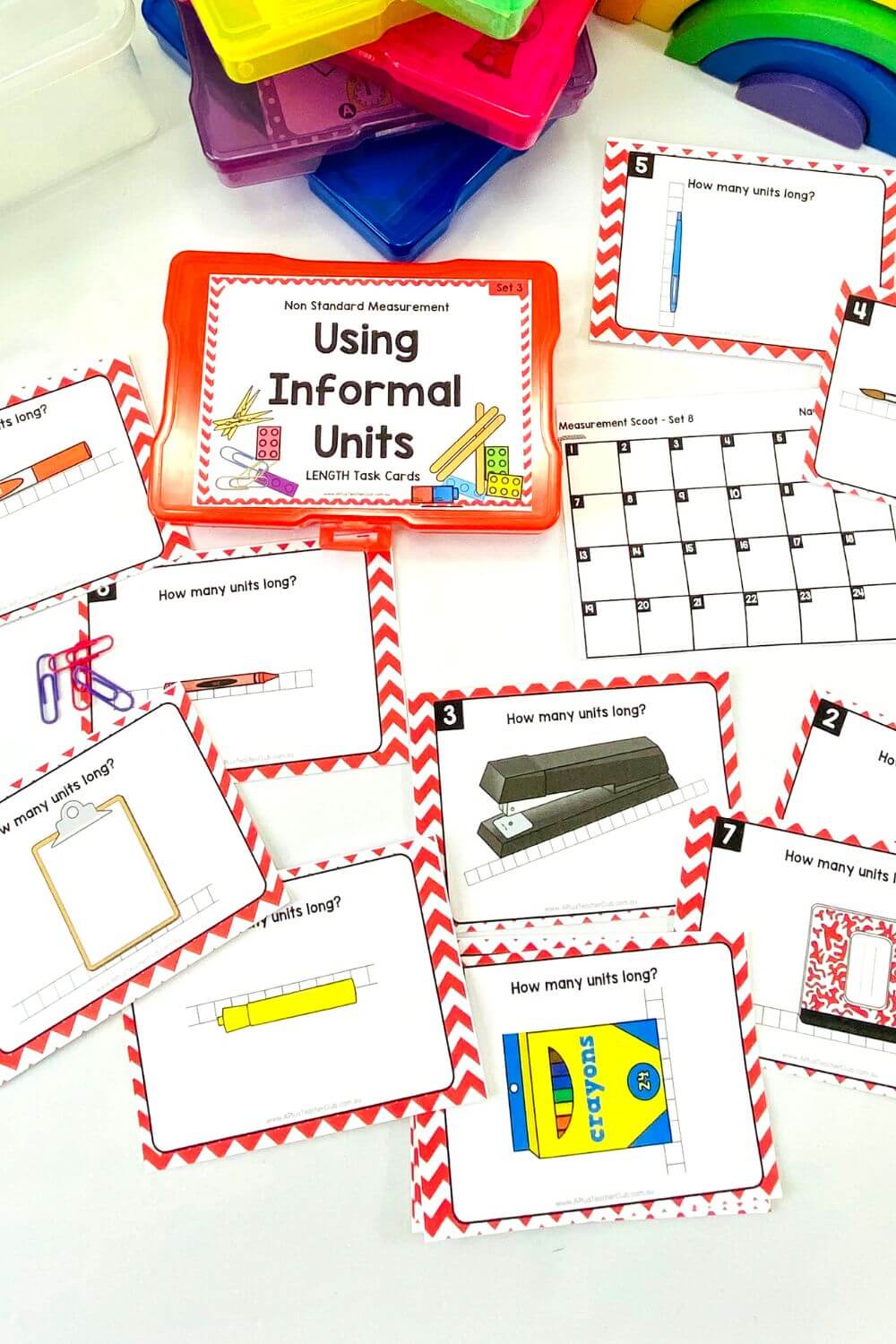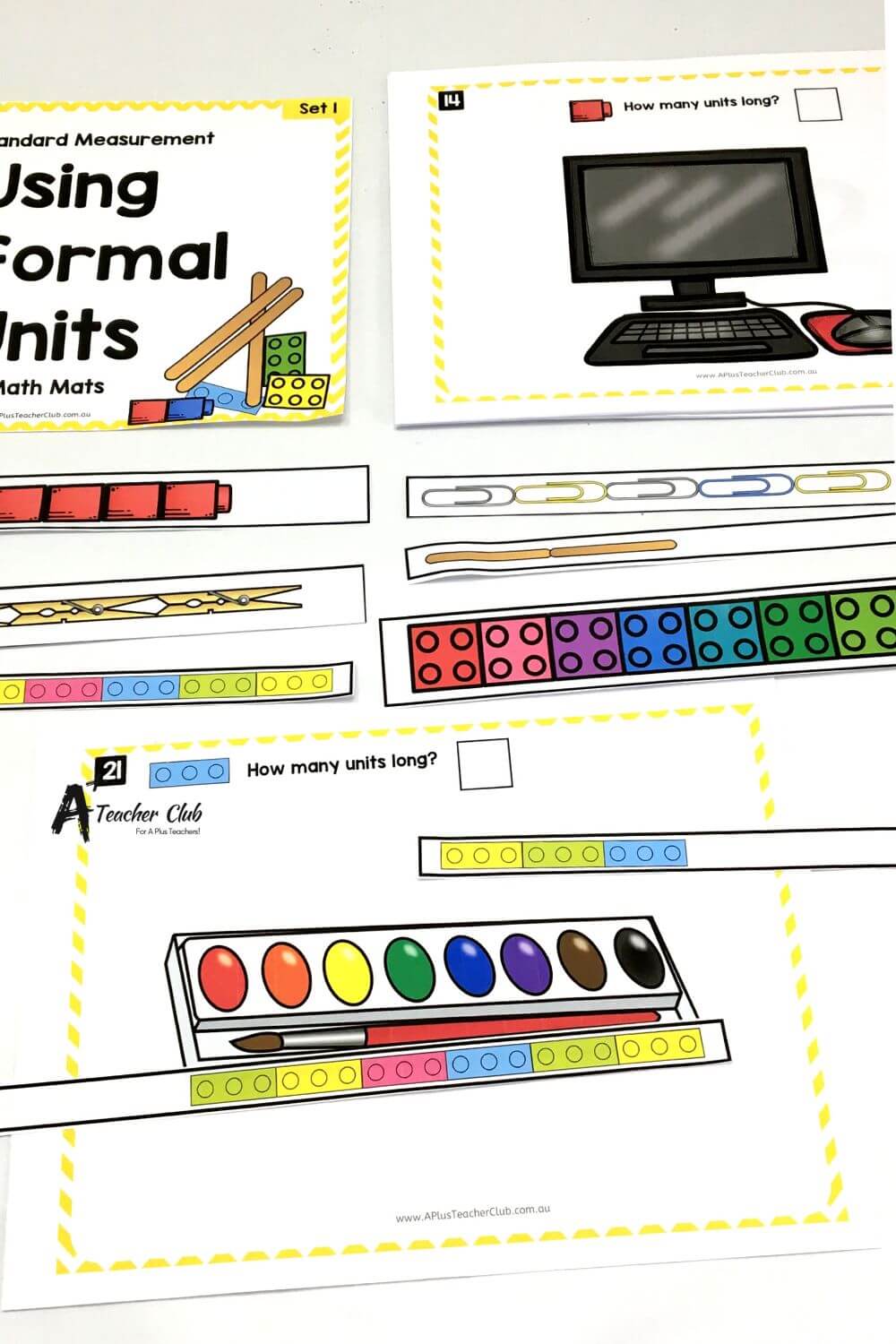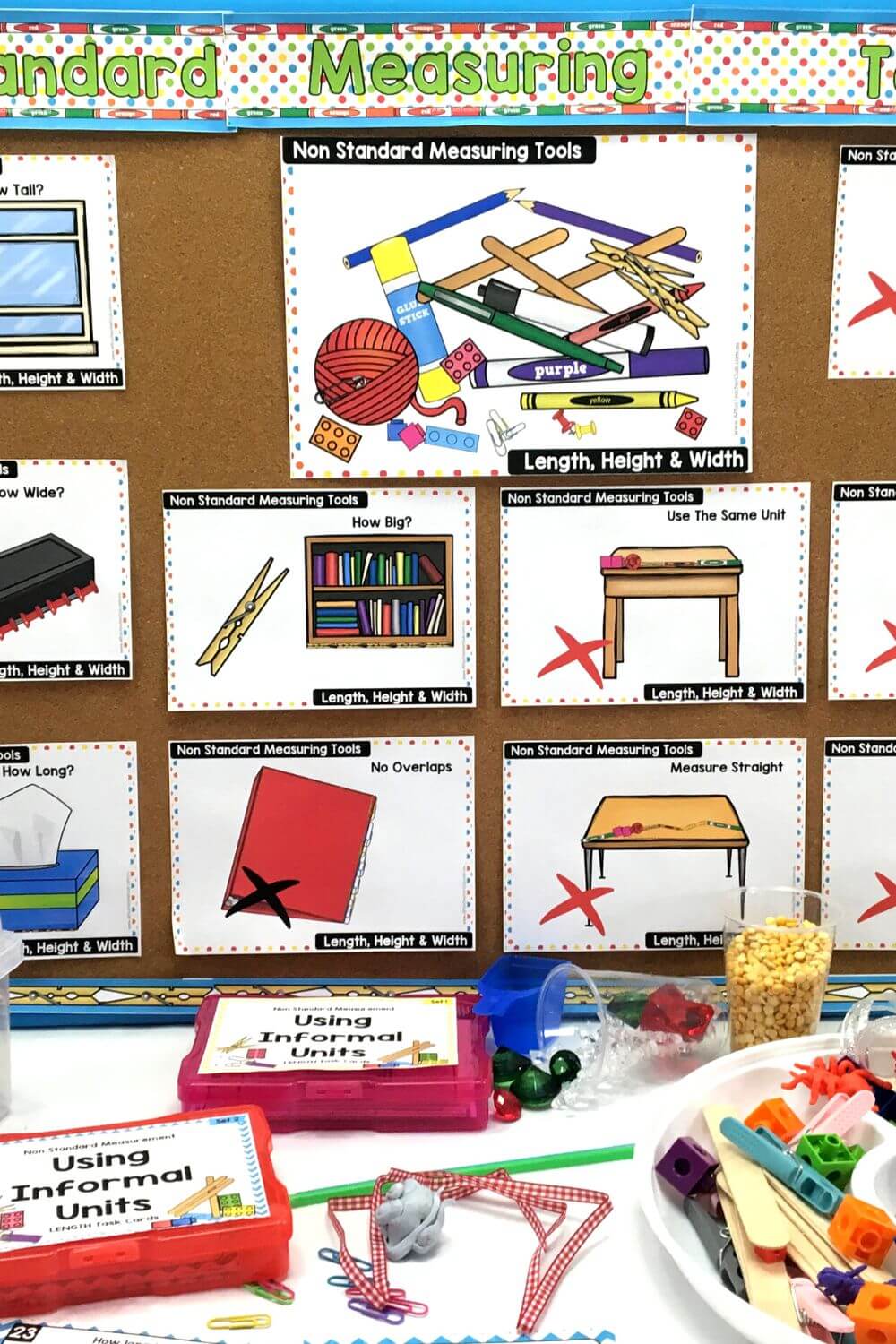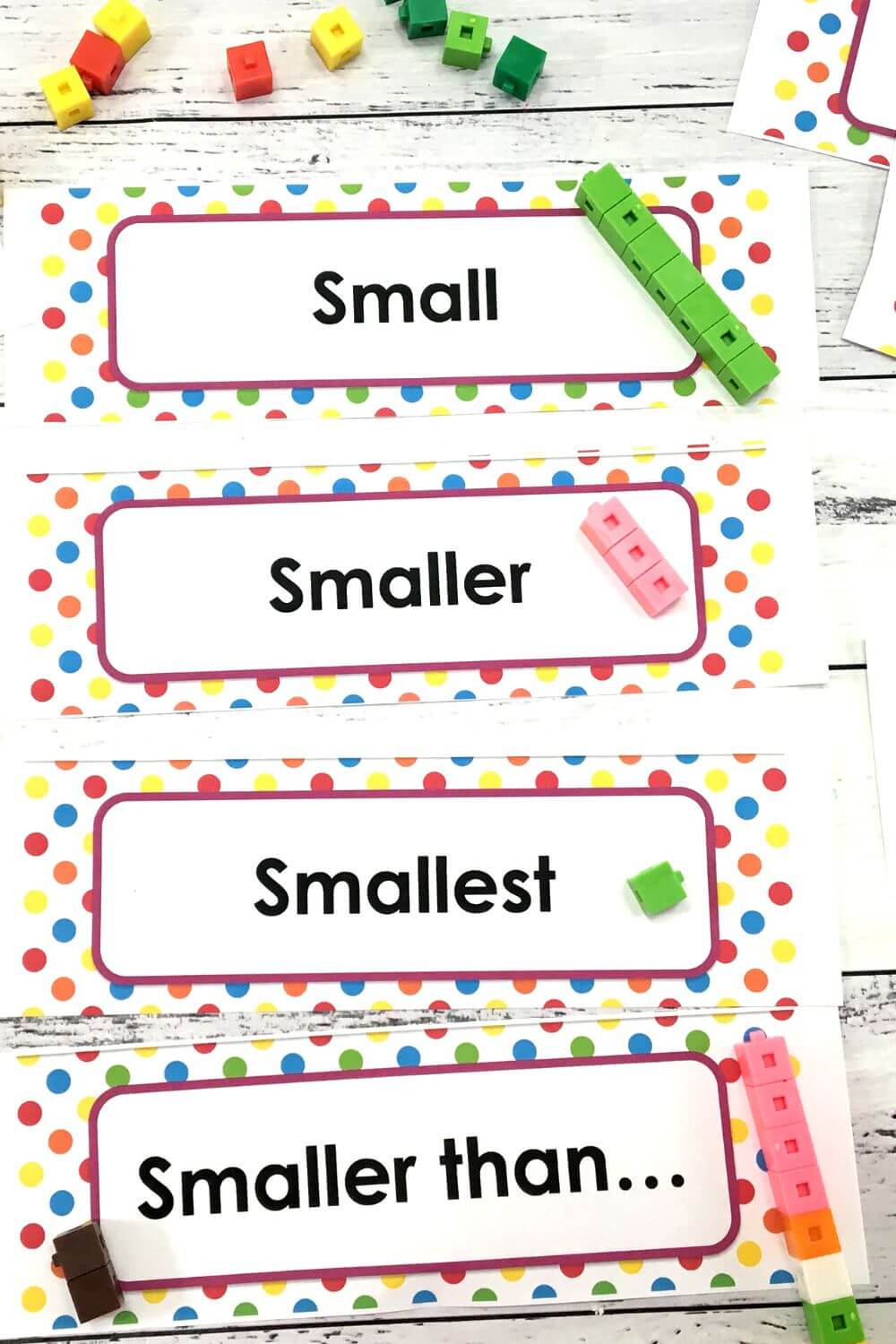Length Activities Year 1 : A Plus Teacher Club
Units Of Measurement
Want hands-on Length Activities For Year 1? You’re in the right place! Our measuring length using informal units teaching resources will help your first grade/year 1 students learn to compare and order the length of several objects and make learning about length a breeze!
Before kids are introduced to measuring length using formal measuring tools like rulers and tapes, they need to be taught the essential skills and steps of the measurement process, known as non-standard measurement.
Read on to find out what you need to know about length and teaching Non-Standard Measurement For Kids.
Introduction to Measuring Length
Measuring length is a fundamental concept in mathematics that involves determining the distance between two points or the size of an object. In Year 1, students are introduced to measuring length using non-standard units, such as blocks, counting bears, and paper clips. This hands-on approach helps young learners grasp the basics of measurement without the complexity of standard units. By using non-standard units, students can focus on understanding the process of measuring and comparing lengths, which lays the foundation for more advanced measurement concepts in later grades.
Teaching measurement using non-standard units is not just about learning math; it’s about developing essential life skills. Whether it’s building a tower with blocks, cooking with measuring cups, or conducting a simple science experiment, measuring length is an everyday skill that students will use throughout their lives. By starting with non-standard units, we make the learning process fun and accessible, ensuring that students build a strong foundation in measurement.
Teaching Length in Year 1
To build a deep understanding of the measurement process and the skills needed to measure accurately kids need to practice measuring using informal non-standard units like pop sticks, paper clips and blocks. Math measurement resources can support this learning process by providing activities, worksheets, and lesson plans that focus on understanding length using both standard and non-standard units.
So what is non-standard measurement?
Non-standard measurement is using an informal unit to measure objects. It’s used by students in Foundation Stage, Kindergarten, Nursery, Reception and Year 1. The purpose of non-standard measurement is to focus the child on key measuring skills rather than reading tricky scaled instruments. Universal non-standard-measurement skills included learning to:
- select the right tool to measure the object being measured
- select the same unit and not different units when measuring an object
- measure without gaps or overlaps
- start and end the measuring in the right spots
- measure it straight
- be precise
The main difference between teaching measurement in Year 1 and the years below is the notion of using a uniform non-standard unit to find out how “much’ something measures. Previously students have not used units to say how big or small something is. Instead they have learnt to compare objects directly against each other to find out which is the biggest or smallest.
When teaching Length to Year 1 Students your teaching programs should focus on:
- using everyday language to compare 3 or more objects:
long, longer than
short, shorter than,
tall, taller than
- Using direct comparison to compare objects. This involves placing two objects side by side, and lining them up, to see which is longer.
- Using indirect comparison of two lengths – using a non-standard unit e.g. counters, cubes, paperclips, to decide which object is the longest or shortest
- Learning to measure and compare the objects by lining up items from the same starting point
- Understand that in order to compare objects the unit of measurement (non-standard unit) must be the same
- Given a range of measuring materials which they can select freely to perform the measuring task. This encourages students to select the right tool for the job
- Use a piece of string to indirectly compare & order the length of objects
- Recognise that informal units must be uniform and used end to end without gaps or overlaps
- Discuss why two groups of students might get different measurements for the same object
- Estimating – encourage students to estimate their answer before completing the task, then review their guess, discussing how to make a good estimation
Resources listed in this collection
Click to jump to...-
Non-Standard Length Activities Year 1 Compare & Order 3 Objects
-
Non-Standard Length Activities Year 1 Monster Trucks Pre Filled
-
Non-Standard Length Activities Year 1 Monster Trucks EMPTY
-
Non-Standard Length Activities Year 1 Fairy Tale Mats
-
Non-Standard Length Activities Year 1 Which is Right?
-
Non-Standard Length Activities Measure & Compare Task Cards
-
Non-Standard Length Activities How Many Units Task Cards
-
Non-Standard Length Activities Which Unit Task Cards
-
Non-Standard Length Activities How Many Squares Task Cards
-
Non-Standard Length Activities Informal Rulers Task Cards
-
Non-Standard Units Display
-
Non Standard Length Words
Year 1 Non Standard Length Resources
Explore tags
More Measurement Activities
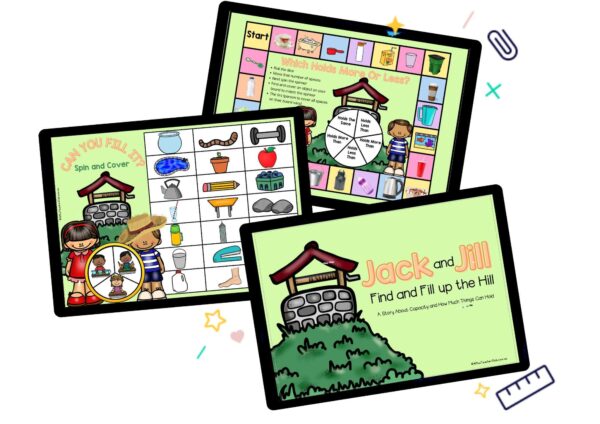
Non Standard Capacity - Jack & Jill
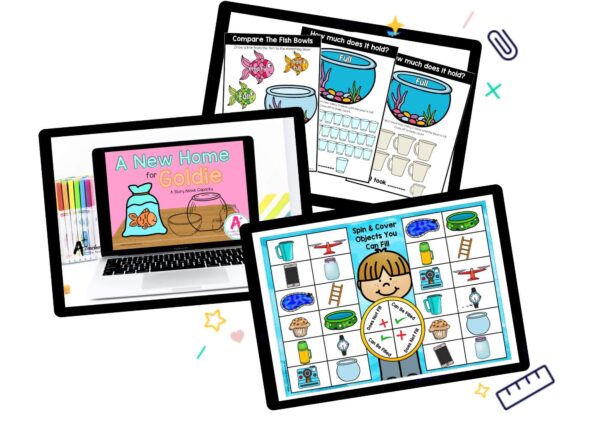
Capacity - K - PP
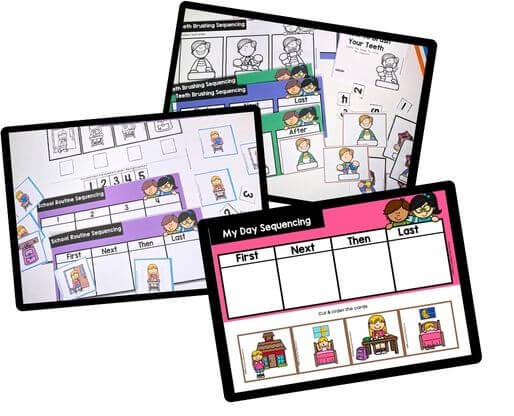
Time - 4 Step Sequencing
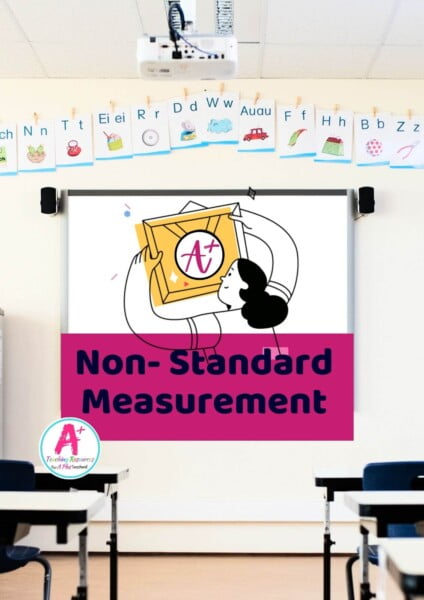
Year 1 Non-Standard Measurement
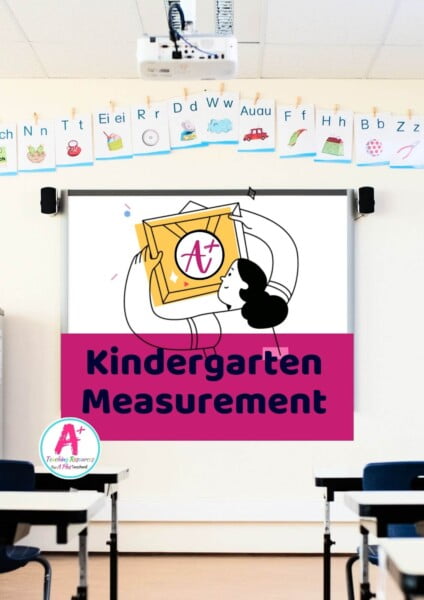
EYFS Non-Standard Measurement

Time - Days of the Week
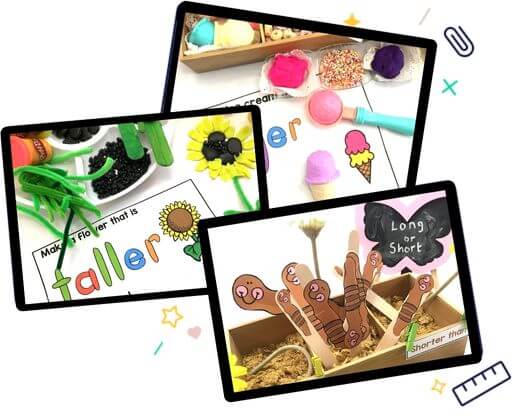
Length - Non-Standard
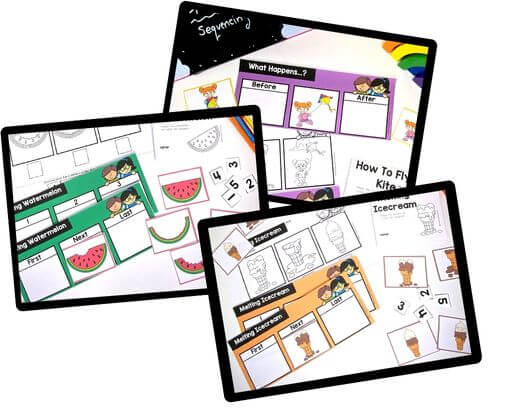
Time - 3 Step Sequencing

Area - Non-Standard
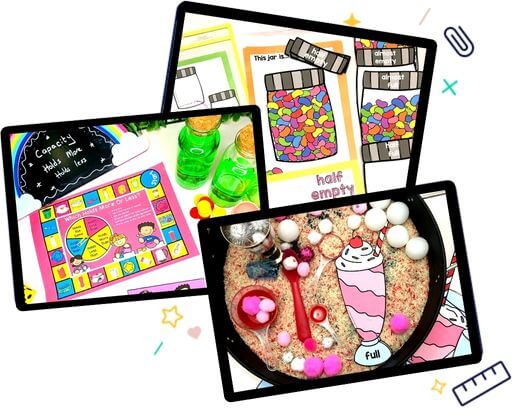
Capacity - Non-Standard

Mass - Non-Standard

Vocabulary - Measurement
Can't find what you're looking for?
Send us a request! Use this form to request a resource. Please give details of the learning area, topic, year level, curriculum links. We’ll be happy to take a look to see if we can fit it in. Unfortunately a request does not guarantee we will be able to make it!
"*" indicates required fields



